This section of the website is for blind and partially sighted gardeners and has Thrive’s top tips and comprehensive advice to ensure that you can enjoy working in your garden.
There is practical information to make most garden jobs easier, advice on how to take care, other useful hints and tips, and notes about which equipment and tools will be particularly helpful.
These are the gardening jobs that we cover - getting ready, digging, weeding, mowing and lawn maintenance, pruning, trimming hedges, sweeping and raking, watering, sowing seeds, planting out, growing in containers and tips on garden design.
Look in the boxes below to find out more.

Thrive has worked with visually impaired gardeners for more than 30 years and during this time we have collected a wealth of gardening hints, tips and stories from blind and partially sighted people.
Sharing this knowledge with others is an important part of our work, so to help you start or continue gardening at home on your own, or with family and friends, or in gardening groups and clubs, we publish a range of leaflets, fact sheets and books. Some of these publications are free and some can be purchased from the Thrive website.
Find out more about Thrive publications for visually impaired gardeners

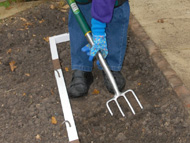 |
|
Digging can be hard work but there are ways to make the job easier for blind and partially sighted gardeners. Thrive's top tips include choosing the right tools and using a frame as a guide.
Find out more about digging when you have sight loss
|
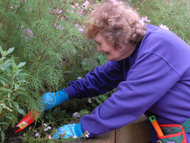 |
|
Keeping your garden free of annual and perennial weeds will help keep your garden tidy and your plants healthy, but it needn't be too much of a chore with Thrive's helpful hints and tips.
Find out more about weeding when you have sight loss
|
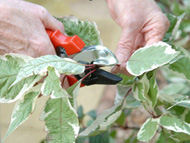 |
|
When you sit to garden, keeping up with the pruning should be fine as long as you can safely place a seat or your wheelchair near the shrub you want to work on.
Find out more about pruning when you have sight loss
|
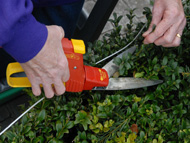 |
|
Managing a hedge can be made easier by using the right tools and taking care. Trimming will encourage strong, dense growth and keep your hedges at a manageable height and width.
Find out more about trimming hedges when you have sight loss
|
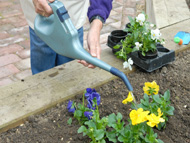 |
|
This job can take time every day, particularly if you grow vegetables or have plants in containers. Whatever you like to grow, it makes sense to find ways to make watering easier.
Find out more about watering when you have sight loss
|
 |
|
Growing your own plants from seed can save money and is a very satisfying gardening activity. Thrive has a number of useful tips for blind and partially sighted gardeners.
Find out more about sowing seeds when you have sight loss
|
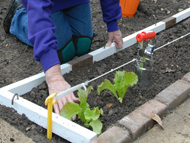 |
|
Most plants grown in pots can be planted year-round and there are ways to make the job easier for blind and partially sighted gardeners.
Find out more about planting out when you have sight loss
|
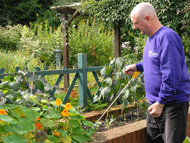 |
|
Garden layout can make a real difference to how you enjoy gardening and Thrive's design ideas should make any garden easier to use.
Find out more about tips on garden design for people with sight loss
|
 |
|
Carrying your tools and equipment can be a challenge, but there are some ways of making life easier including tool belts, garden carts and pot carriers.
Find out more about moving things in the garden
|